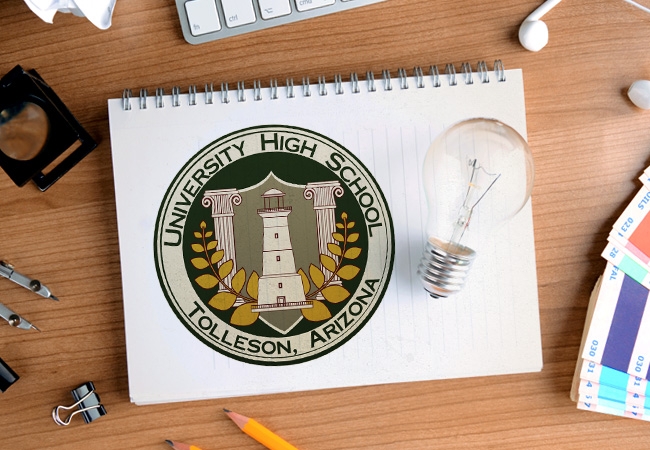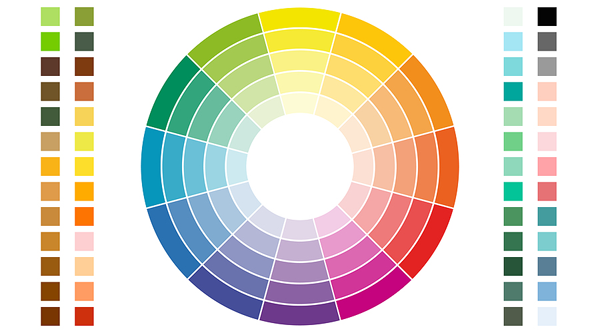With so many issues to worry about when managing a school, foremost of which is educating students, worrying about your school’s first impression might seem like a rather petty problem. However, first impressions are critical because people tend to become attached to their initial impressions (people and organizations). We find it very difficult to change those initial opinions, even when presented with facts and evidence.
To make it worse, this means that earning parents’ trust and confidence usually begins before they ever set foot within the doors of your school. While we’d each like to believe we form our impressions based on logic and evidence, psychologists and social scientists tell us this is seldom the case. Our intuitive first impressions can and do predispose our opinions.
So, let’s look at a few areas that contribute to a positive first impression, each of which we have considerable control over.

Logo
Your school’s logo, and please tell me you have one, is the first indication of your values. It communicates ownership of your goals, which are the outcomes of your products and services. Yes, a school has products and services. The products are your curriculum, teaching methodologies, and communication strategies. Your services are how you deliver on those products—how effective your teaching staff is and how customer-focused your employees, volunteers, administrators, and governing board members are.
Your logo is the visual representation of all of that as a whole. It makes a strong first impression by grabbing attention, making your school memorable, and separating you from the competition. It represents what you stand for and puts that representation front and center.
Your logo should help people relate to what your school aspires to and how that makes them feel. A good logo can trigger positive recall about your school, your values, and your successes.
Your school is a professional organization, delivering professional services, striving to earn respect and credibility while educating this country’s youth. Doesn’t the image that triggers positive impressions need to be representative of those goals? Do more than copy what other schools are doing, but dare to be different. A well-designed school logo or mascot can communicate your culture (fun, academic, artistic, traditional, etc.) to your mission (college-ready, character development, inclusive, reaching potentials, etc.) and show how you stand out from other schools. With myriad educational choices, your school needs to stand out in a good way! Start by taking a serious look at your logo. For an affordable, professional design, we can help. Check it out.

Colors
There are tons of studies validating the power of color on first impressions and branding. One study by the Institute for Color Research says that people make a subconscious judgment about a product or environment (yes, that includes your school organization) within 90 seconds of their initial viewing and that between 62% and 90% of that assessment is based on color alone.
So, if you haven’t done so already, put some real thought into your school and district’s color scheme. Once selected, keep it consistent and don’t change it with every new administration change. It’s about your customers (parents and students) and not the color that your latest superintendent likes or doesn’t like. It is part of your brand and should represent what your school stands for, and unless what you stand for has changed radically, your branding shouldn’t either.
Remember, your school brand is not just your logo or mascot or even your school colors. Your brand is the idea or the image that people have in mind when they think about your school and the services you provide (both emotionally and physically). This brand includes your school name, logo, and all your visual identities, staff, educational offerings, facilities, and marketing. Your school colors are a part of that brand identity, so make them count.
Colors have value because they can increase your brand recognition by up to 80 percent (according to a University of Loyola, Maryland study). In addition to recognition, we all have specific reactions to colors (although that changes depending on things like age, gender, and nationality). Accepting the psychology of color when choosing your school colors can help your audience (parents, students, community members) know who you are and what your school values. The wrong colors can also drive them away.
Knowing your school brand personality can help you select colors that reflect that personality.
- You’ll look at tone. (Is your brand playful and fun or serious and focused?)
- You’ll look at value. (Is your brand inclusive and affordable or elite and exclusive?)
- You’ll look at the targeted age. (Is your brand youthful or mature? This will depend on your target students, as an elementary district would have a different branding than a high school district.)
- You’ll look at energy. (Is your brand loud and busy or calm and subdued?)
Next, you’ll want to factor in the traditional meanings for common colors. Studies tend to put the following associations to these primary colors:
- Red: strength, energy, urgency, excitement, passion
- Yellow/Orange: fun, cheerfulness, warmth, joy, optimism, and creativity
- Blue: calm, reliability, stability, tranquility (popular color for men)
- Green: nature, freshness, health, simplicity, harmony, wealth, decisiveness
- Violet: royalty, wisdom, magic, and aristocracy
- White: purity, cleanliness
- Black: authority, power, intelligence
This infographic by Marketo can give you an overview of what colors mean to most people. See where your school might fit in.

Just remember that school colors are about your audience and the feeling you want to invite. Smart branding will take into account the known psychological effects of colors and use the information to attract customers and leave them with a positive impression.

Template (layout)
What constitutes a great layout for your school’s website? That depends on your website’s purpose. In the case of a school’s website, it is serving two purposes. One goal is to keep students and parents informed and engaged with what is happening at the school and with their children. The other purpose is to be a resource for parents and students looking to select a school and help them decide. Let’s discuss the existing parent needs first.
Here’s a quote from a parent that describes what most parents are looking for:
“As a parent, I appreciate being able to find what I need quickly and easily. Too much clutter on a home page is overwhelming and makes things harder to find, so a clean, streamlined design with lots of white space is ideal. A professional-looking website makes me feel like the school has it all together, where something that looks like the 5th-grade computer class put it together causes me to lack confidence in the information.”
Here’s another quote from a parent not quite so happy with her school’s website:
“Our district’s website is terrible because half of what I need is on the district site, but it is impossible to find. And, the school sites have practically NO information that is valuable.”
As you can see, your students’ parents want to find the information they need as quickly and intuitively as possible. This means a clean, logical layout (or template) for your school website(s). It also means that your school-level websites must also have information that applies to the parents and students going to those schools. Often the school communications folks only focus on the district-level website, and existing parents aren’t likely to search for relevant information for their students on a site dedicated to the business and marketing aspects of education.
One way we improve the logic on our client site’s layout and navigation is to include an area for “quick links.” It provides an area, in addition to the main navigation, where you can provide common links for targeted groups like students, parents, or community. You can provide quick access to the most commonly needed information like calendars, staff contact information, latest news, etc., and all only two clicks away. Parents can go quickly to the area they need without wading through dozens of pages and hundreds of links only to become frustrated.
Another thing to remember is that from your school’s perspective, you don’t have to start from scratch to have a clean, easy-to-navigate school website. For our clients, we give them everything they need to have a well organized, informative, yet uncluttered home page and website from the get-go. All they have to do is fill in the blanks, and they have an extremely effective website. If you’re on your own and aren’t looking for a new website vendor, reach out to us, and we’ll have one of our copywriters put it all together for you.

New video (marketing)
Think of a school marketing video as a shop window. It is that first look to see if what you are offering is what a parent is looking for. Studies show that an engaging video on your school website’s homepage increases conversion by up to 80%, so to include a video that represents your school makes good sense. Even public schools in an area with little competition for students should consider the value of using video to create a positive perception and generate pride and trust in your school.
You don’t have to have a professionally edited video either. Parents and prospective parents enjoy seeing everyday life at your school. You have engaging content all around you that you can easily edit using basic tools. Some ideas that are useful resources for interesting content include:
- Sporting events
- Proms or other dances
- Class trips
- Award ceremonies
- Student performances and concerts
- Student or teacher interviews
To make good use of a marketing video (a video where you are showing what you have to offer) might include the following:
- At the end of your video, you can link to your enrollment page and a sign-up to get a school tour.
- Reuse your marketing video in other locations like YouTube, Facebook, Vimeo, and other social media channels.
- Use your video on other pages of your site, beyond the home page, like your site’s enrollment areas. We recommend areas targeting prospective parents and students like a “Why Choose Us” section.
If you haven’t created a good quality video for your website (and other uses), put it on the list of upgrades for your school’s image now. If you need some tips, check out our blog article on how to “Create a School Video Without Breaking the Bank” and “School Video Marketing Ideas.”

Photos
There are many reasons to ensure your website is visually appealing, and nothing is more visual than a photograph. So, while it may be tempting to cram as much information on the page as you can, don’t overwhelm your site visitors with text-heavy pages, but use images to reinforce your messages. The right photos can turn an ordinary school website into one that is engaging and memorable.
You don’t have to have an expensive DSLR camera to take good photos any longer. Most smartphones are now equipped with some amazing high-quality cameras. It is likely you can even recruit students with an interest in photography to help you out. Here are a few tips to point you in the right direction:
- Make sure your images are relevant to the topic on the page. In other words, does the photo help your site visitor understand the point you are trying to make? Does the image create emotional appeal?
- Use photos of real people whenever possible. A/B testing studies have shown a significant increase in conversion and engagement when a happy, smiling person is part of the page content, particularly on main landing pages.
- Use images to reinforce the message you want to convey. For example, if you want to stress your extra-curricular programs’ strength, then be sure to include photos of students happily engaged in those activities.
- Be sure to optimize the size of all your photos and images to avoid increasing the load time on your web page. You don’t need to have images that are larger than 72 dpi on your site, so always check the resolution size before uploading.
For more helpful tips for taking and using the best photos, check out our article, “You Don’t Always Need 1,000 Words; Just a Few Good Photos.” Or download our free photography checklist by following the link below:
Download our FREE Photography Checklist for Schools
Now is the time!
With the disruption in education this past year, and with the increased competition from online education, it is critical that you put your best foot forward to recruit, enroll, and retain students and staff. These five small areas of focus can help you do that. Don’t forget, School Webmasters can help.


